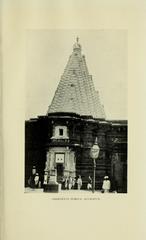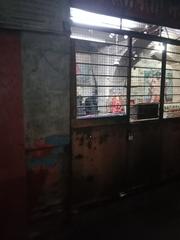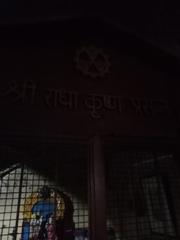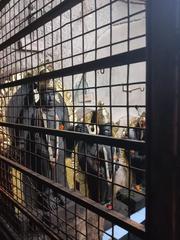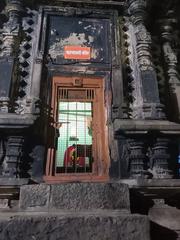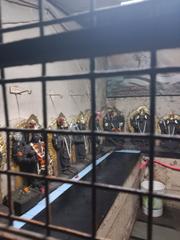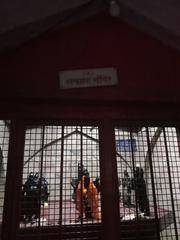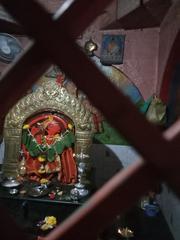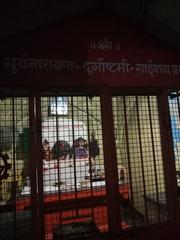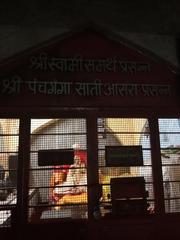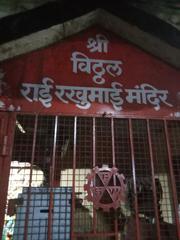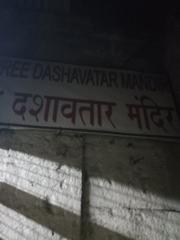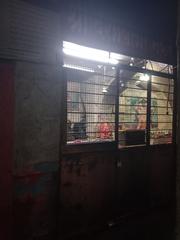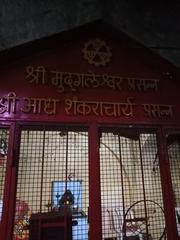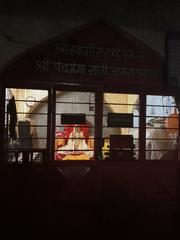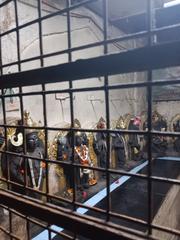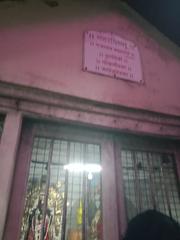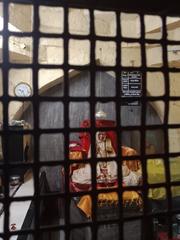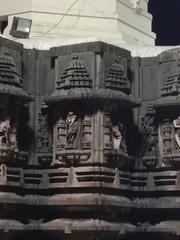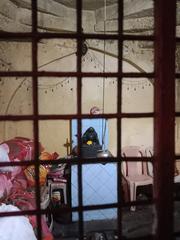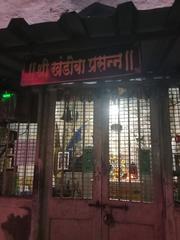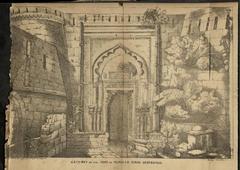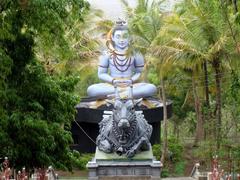
Mahalakshmi Temple Kolhapur: Visiting Hours, Tickets, and Historical Significance
Date: 14/06/2025
Introduction
The Mahalakshmi Temple in Kolhapur, Maharashtra—also known as the Ambabai Temple—is a renowned spiritual and cultural landmark. Revered as one of the 51 Shakti Peethas, it is believed to be the sacred site where the eyes of Goddess Sati fell, imbuing it with immense religious significance. Established in the 7th century CE under the Chalukya dynasty, the temple is celebrated for its distinctive Hemadpanthi architecture, rich history, and vibrant festivals. This comprehensive guide details the temple’s origins, architectural marvels, rituals, visiting hours, ticketing, accessibility, nearby attractions, and essential visitor tips to ensure a fulfilling and respectful pilgrimage (Tusk Travel, HerZindagi).
Table of Contents
- Origins and Historical Evolution
- Architectural Marvels
- Symbolism and Religious Significance
- Festivals and Ritual Life
- Visiting Hours and Ticket Information
- Accessibility and Visitor Guidelines
- How to Reach the Temple
- Nearby Attractions and Suggested Itinerary
- Frequently Asked Questions (FAQ)
- Practical Travel Tips
- Conclusion and Call to Action
- Sources
Origins and Historical Evolution
The Mahalakshmi Temple traces its roots to the 7th century CE, with initial construction attributed to the Chalukya dynasty, particularly King Karandev around 634 CE (Tusk Travel). Over the centuries, the temple has undergone expansions and renovations under the Shilahara and Maratha rulers, reflecting both religious devotion and the evolving architectural styles of western India. As a key Shakti Peetha, it honors the spot where the eyes of Goddess Sati are believed to have fallen, attracting devotees of Shaktism from across the country (TravelSetu).
Architectural Marvels
Layout and Structural Design
The temple is a classic example of Hemadpanthi architecture, utilizing black basalt stone and intricate carvings, with little or no mortar. The complex includes a main sanctum (garbhagriha), a spacious mandapa (assembly hall), and several subsidiary shrines (Ambabai Official Site). The west-facing orientation is unique among Hindu temples and allows for the biannual Kirnotsav festival, when the setting sun illuminates the main idol.
Main Idol and Subsidiary Shrines
At the heart of the temple resides the swayambhu (self-manifested) black stone idol of Goddess Mahalakshmi, about 3 feet tall, adorned with a crown and symbolic objects. Surrounding the main sanctum are shrines dedicated to Mahasaraswati, Mahakali, Ganapati, and Lord Vishnu, reflecting the temple’s inclusive spiritual focus (Tusk Travel).
Restoration and Conservation
Significant restoration was carried out under Chhatrapati Shahu Maharaj in the 18th century, and ongoing conservation efforts aim to preserve the temple’s structural integrity and artistic heritage (Hindu Blog).
Symbolism and Religious Significance
The temple’s unique west-facing orientation is said to symbolize the goddess’s benevolence in fulfilling devotees’ desires. Richly carved panels depict episodes from the Devi Mahatmya, Ramayana, and Mahabharata, offering spiritual lessons and artistic splendor.
As one of the “three and a half” Shakti Peethas, the temple is a major pilgrimage site, and its spiritual potency is reinforced by countless legends of divine interventions and answered prayers (DarshanTiming).
Festivals and Ritual Life
Major Festivals
- Navratri: Nine days of grand aartis, processions, and cultural programs, with the goddess adorned in splendid attire (Treebo).
- Kirnotsav: Celebrated twice yearly (Jan 31–Feb 2 and Nov 9–11), when the setting sun’s rays directly illuminate the idol, a marvel of ancient architectural planning (Treebo, Tripoto).
- Rathotsav (Chariot Festival): The deity is paraded through the city in a silver chariot amid music and fireworks.
- Other Festivals: Makar Sankranti, Diwali, Gudi Padwa, and Varalakshmi Vratham are celebrated with special rituals.
Daily Rituals
Rituals include:
- Kakad Aarti: Opening aarti at dawn.
- Abhishek: Ritual bathing of the idol.
- Alankar: Dressing the goddess.
- Naivedya: Food offerings.
- Maha Aarti: Evening worship.
- Shej Aarti: Closing aarti at night.
Timings may vary during special events and festivals.
Visiting Hours and Ticket Information
- Regular Hours: Open daily from 4:00 AM to 10:30 PM (Gokshetra; Ayodhya Registration).
- Entry Fee: There is no entry fee for darshan. Donations are welcomed.
- Special Passes: VIP and special darshan passes are available online, especially during festivals, to manage crowds (DarshanTiming).
Accessibility and Visitor Guidelines
- Dress Code: Modest attire is expected. Men should avoid shorts, and women are encouraged to wear sarees or salwar-kameez (Myoksha). Footwear must be removed before entering.
- Photography: Prohibited inside the sanctum; allowed in designated areas.
- Facilities: Drinking water, restrooms, cloakrooms, and prasad stalls are available.
- Differently-Abled Access: Ramps and assistance provided; notify temple authorities in advance if needed.
How to Reach the Temple
- By Rail: Kolhapur Railway Station is about 3.8 km away, with connections to major cities (TripXL).
- By Road: Well-connected to Pune (235 km), Mumbai (380 km), and Goa (225 km).
- By Air: Kolhapur Airport offers limited domestic flights, approximately 10 km from the temple.
- Local Transport: Auto-rickshaws, taxis, and city buses are easily available.
Nearby Attractions and Suggested Itinerary
Kolhapur offers a rich array of religious, historical, and natural sites:
- Binkhambi Ganesh Temple: Unique pillarless design, 1 km away.
- Jyotiba Temple: Hilltop shrine, 18 km away.
- Panhala Fort: Historic Maratha fort, 20 km from Kolhapur (TripXL).
- New Palace Museum: Royal memorabilia and zoo.
- Rankala Lake: Scenic spot for boating, 3 km away (MouthShut).
- Siddhagiri Gramjivan Museum: Open-air rural life museum, 15 km away.
Suggested itinerary:
- Day 1: Mahalakshmi Temple, Binkhambi Ganesh Temple, Rankala Lake
- Day 2: Panhala Fort, New Palace Museum
- Day 3: Jyotiba Temple, Siddhagiri Gramjivan Museum, local shopping
Kolhapur is also famous for its cuisine (try misal pav and Kolhapuri pedha) and handicrafts like Kolhapuri chappals.
Frequently Asked Questions (FAQ)
Q1: What are the Mahalakshmi Temple visiting hours?
A: Daily from 4:00 AM to 10:30 PM.
Q2: Is there an entry fee?
A: No. Entry is free, with optional charges for special pujas or VIP passes.
Q3: Can I book darshan passes or guided tours online?
A: Yes, via the official temple website and authorized portals.
Q4: Is the temple accessible for differently-abled visitors?
A: Yes, with ramps and assistance available.
Q5: What is the best time to visit?
A: October–February (pleasant weather); Navratri and Kirnotsav for festival experiences.
Practical Travel Tips
- Visit early morning or late afternoon for a peaceful experience.
- Dress modestly; avoid shorts and sleeveless tops.
- Respect temple rituals and staff instructions.
- Carry minimal belongings; storage is available.
- Book accommodation well in advance during festivals.
- Try local vegetarian cuisine.
- Stay hydrated and be prepared for crowds during peak times.
Conclusion and Call to Action
The Mahalakshmi Temple Kolhapur stands as a beacon of faith, history, and culture. Its ancient origins, architectural splendor, and vibrant festivals offer an enriching experience for every visitor. Whether you are a pilgrim, history enthusiast, or cultural traveler, careful planning—considering visiting hours, event timings, and local customs—will ensure a memorable journey.
For the latest updates, guided tour options, and exclusive travel insights, download the Audiala app and explore our website. Follow us on social media for traveler stories, festival news, and more on Kolhapur’s heritage.
Sources
- Tusk Travel
- HerZindagi
- Treebo
- Traveler Bibles
- TripXL
- Ambabai Official Site
- Hindu Blog
- TravelSetu
- DarshanTiming
- Ayodhya Registration
- Gokshetra
- Myoksha
- MouthShut
- Tripoto

